Tax planning techniques play a crucial role in helping individuals and businesses manage their financial obligations legally and efficiently. While paying taxes is a responsibility, strategic planning ensures that taxpayers do not pay more than necessary. In the middle of budget preparation and investment strategies, incorporating tax planning techniques helps reduce taxable income and maximize savings. By understanding how to leverage available deductions, exemptions, and credits, taxpayers can keep more of their earnings and reinvest that capital toward financial goals or business expansion.
Leveraging Tax-Deferred Investments as a Long-Term Strategy
One of the most effective tax planning techniques involves utilizing tax-deferred investment vehicles such as retirement accounts, annuities, and certain insurance plans. These allow individuals to postpone paying taxes on earnings until withdrawals begin, typically during retirement when income and tax rates are lower. In the middle of building a retirement portfolio, contributing to plans like IRAs or 401(k)s helps reduce taxable income today while growing wealth over time. This deferred growth compounds year over year, giving investors a strong foundation for long-term financial security without immediate tax consequences.
Making Use of Deductions to Lower Taxable Income
Deductions remain one of the core tax planning techniques for both individuals and businesses aiming to reduce taxable income legally. By itemizing deductions such as mortgage interest, medical expenses, and charitable contributions, taxpayers can often lower their tax liability significantly. In the middle of annual filings, careful recordkeeping and planning allow individuals to claim all entitled deductions, while businesses can deduct expenses like utilities, travel, and employee wages. Understanding how deductions apply and aligning spending accordingly provides consistent tax relief and keeps more income in the taxpayer’s hands.
Timing Income and Expenses to Your Advantage
Another valuable strategy among tax planning techniques is the timing of income and expenses. By deferring income to the next fiscal year or accelerating deductible expenses into the current year, taxpayers can shift their financial obligations to reduce tax exposure. In the middle of year-end planning, business owners might delay billing clients or prepay certain expenses to lower current year profits. Individuals may schedule medical procedures or make charitable donations before December 31 to claim the benefits sooner. This method requires foresight but can result in considerable savings with the right execution.
Using Tax Credits for Direct Reductions in Liability
Unlike deductions, which reduce taxable income, tax credits offer a dollar-for-dollar reduction in tax owed, making them powerful tools in any list of tax planning techniques. Credits for education, energy-efficient home upgrades, or child and dependent care can significantly reduce what’s owed to the IRS. In the middle of selecting eligible credits, taxpayers should evaluate both refundable and non-refundable options and understand the qualifications. While non-refundable credits can only reduce liability to zero, refundable credits can result in a refund, increasing the importance of identifying all applicable options.
Maximizing Contributions to Health and Education Accounts

Contributing to Health Savings Accounts (HSAs), Flexible Spending Accounts (FSAs), and 529 education plans offers excellent tax advantages and is considered one of the most beneficial tax planning techniques. These accounts allow for pre-tax contributions and tax-free withdrawals when used for qualified medical or educational expenses. In the middle of managing healthcare costs or saving for a child’s education, these accounts provide a dual benefit: reducing taxable income now and covering essential future expenses without additional tax burdens. Their tax-exempt growth and strategic flexibility make them an important tool in a holistic financial plan.
Utilizing Business Structure to Optimize Tax Liability
For entrepreneurs and small business owners, choosing the right business structure is one of the most impactful tax planning techniques available. Whether operating as a sole proprietor, LLC, S corporation, or C corporation, each structure offers unique tax benefits and obligations. In the middle of forming a new business or restructuring an existing one, evaluating how each option affects self-employment taxes, deductions, and payroll taxes can lead to substantial savings. Proper structuring ensures compliance and allows owners to benefit from tailored deductions while reducing overall tax exposure.
Capital Gains Strategies to Minimize Tax Impact
Managing capital gains through strategic asset sales is another effective method within tax planning techniques. Long-term capital gains—assets held for more than one year—are typically taxed at lower rates compared to short-term gains. In the middle of portfolio management, investors can plan the timing of asset sales to align with income fluctuations, carry forward capital losses to offset gains, or donate appreciated assets to avoid taxation altogether. These decisions require understanding market performance and personal income levels, but when done correctly, they can greatly reduce capital gains tax.
Estate Planning as a Long-Term Tax Strategy
Estate planning is often overlooked in the realm of tax planning techniques, yet it plays a crucial role in managing wealth transfer and minimizing estate and inheritance taxes. Utilizing strategies like gifting, establishing trusts, and leveraging the lifetime exemption can ensure assets pass efficiently to heirs. In the middle of succession planning or preparing for retirement, individuals should work with advisors to assess how estate planning tools align with their overall financial goals. Proper planning not only preserves wealth across generations but also reduces tax burdens for beneficiaries.
International Tax Planning for Global Investors and Expats
Global income introduces complexity, making international strategies a specialized area of tax planning techniques. Expats, investors, and multinational business owners must understand how foreign tax credits, tax treaties, and residency rules impact their obligations. In the middle of navigating dual taxation or foreign earned income exclusions, working with professionals who understand international regulations ensures compliance while minimizing tax liability. Proper structuring of foreign investments and income can prevent costly mistakes and create opportunities to benefit from legal tax shelters or incentives offered by different jurisdictions.
Reviewing and Adjusting Tax Plans Regularly for Optimal Results
Tax laws and personal financial situations change regularly, which is why continuous review is one of the most essential tax planning techniques. By revisiting strategies annually or after major life events, taxpayers ensure their approach remains effective and compliant. In the middle of a changing economy, updates to deductions, credits, and tax brackets can significantly affect outcomes. Periodic review allows for proactive adjustments, ensuring ongoing optimization of tax liability while aligning financial decisions with both short-term goals and long-term vision.
Conclusion
Tax planning techniques serve as essential tools for minimizing tax liability, maximizing savings, and creating long-term financial stability. From deductions and credits to estate planning and global strategies, these techniques offer numerous ways to structure income and expenses strategically. In the middle of each financial year, thoughtful tax planning not only ensures compliance but also empowers individuals and businesses to take control of their finances. By staying informed, making proactive decisions, and working with knowledgeable professionals, taxpayers can unlock significant value and achieve greater financial success.
